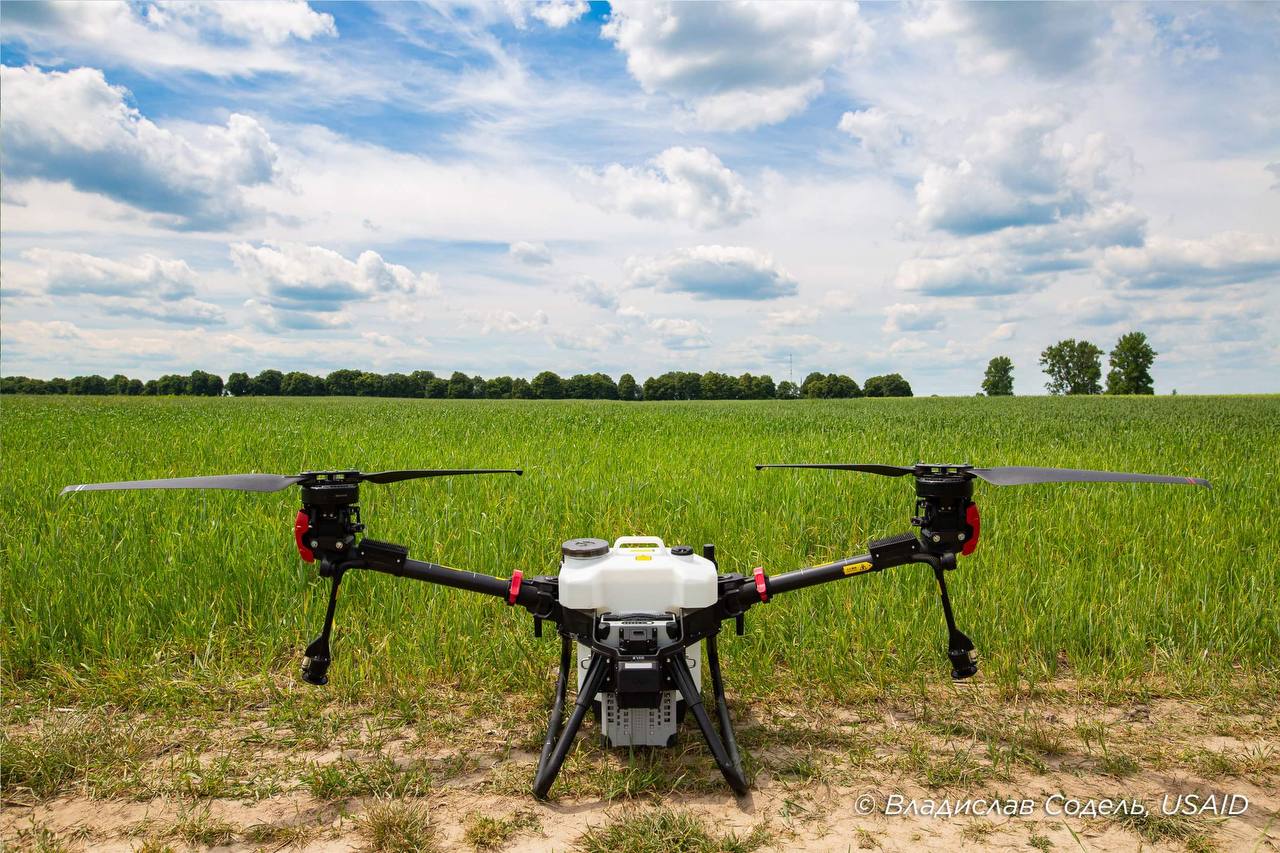
Mining enterprises of Ukraine in January-July this year reduced the export of iron ore raw materials (IORM) in physical terms by 28.8% compared to the same period last year – up to 18 million 571.940 thousand tons.
According to statistics released by the State Customs Service (STS), over the specified period, foreign exchange earnings from the export of iron ore decreased by 49.8% – to $ 2 billion 357.073 million.
Iron ore was exported mainly to Slovakia (19.80% of deliveries in monetary terms), China (16.07%) and Poland (15.6%).
During the reporting period, IORM was imported to Ukraine for $14 thousand in a total volume of 25 tons, while in January-July 2021, iron ore for $130 thousand was imported in a total volume of 1,134 thousand tons. Imports for January-July 2022 were carried out from Britain (78.57%), Italy (14.29%) and the Russian Federation (7.14%).
As reported, Ukraine in 2021 reduced the export of iron ore raw materials (IORM) in physical terms by 4.2% compared to 2020 – up to 44 million 357.727 thousand tons, but increased revenue by 62.8% – up to $6 billion 899.816 million The export of iron ore was carried out mainly to China (41.90% of supplies in monetary terms), the Czech Republic (9.65%) and Poland (7.99%).
Last year, IORM was imported to Ukraine for $184 thousand in a total volume of 1.202 thousand tons, while in 2020 123 tons of iron ore for $75 thousand were imported. Imports for 2021 were carried out from Egypt (55.98%), the Netherlands ( 21.2%) and Poland (7.07%).

The profit of Ukrainian banks in January-July 2022 decreased by 10.8 times – to UAH 3.4 billion, the press service of the National Bank of Ukraine (NBU) reported on Tuesday.
According to the regulator, the income of banks for 7 months of this year increased by 26% against the figure for the same period last year – up to UAH 189.082 billion. Including commission income increased by 20.5% to UAH 112.374 billion.
At the same time, the result from the revaluation and from purchase and sale operations was positive and amounted to UAH 27.214 billion, while for the same period last year it was negative and amounted to UAH 409 billion.
At the same time, the expenses of the banking system in January-July 2022 increased by 1.68 times compared to this indicator in 2021 – up to UAH 185.675 billion, including deductions to reserves – by 12.3 times, up to UAH 73.56 billion . At the same time, fee and commission expenses increased by 1.87% to UAH 18.8 billion,
As reported, Ukrainian banks doubled their net profit in 2021 to UAH 77.5 billion compared to UAH 41.3 billion in 2020.

The period of self-isolation of persons who had contact with a patient with Covid-19 will now be determined by the attending physician in accordance with industry standards in the field of healthcare.
The corresponding norm was approved by the Cabinet of Ministers by Resolution No. 928 of August 19, which is published on its website.
Currently, this period should be 14 days, with a number of exceptions, including those who have completed a full vaccination course or have been ill in the last 180 days.
The new norm corresponds to the norm on the period of self-isolation of patients with Covid-19 and those who are suspected of being infected with Covid-19 – it is also determined by the attending physician.
In addition, as reported, the adopted resolution extended the quarantine from the end of August to the end of December this year.

According to the results of last year, Ukraine became the world leader in increasing the fleet of agricultural unmanned spraying drones, overtaking Brazil, Argentina and the countries of East Asia, according to the Facebook page of the Ukrainian integrator of unmanned solutions DroneUа.
According to him, at the end of 2021, the fields of Ukraine were treated by about 1.5 thousand spraying drones, and their number continues to grow. The company predicts that by the end of the agricultural season in 2022, the area cultivated by agricultural drones will double, to 2 million hectares from 1 million hectares last year.

“Agrodrones are an additional harvest due to the absence of technological tracks – up to 4% with classical ground processing and zero damage to tall crops. Last year, Ukraine produced an additional 157 thousand tons of crops per 1 million hectares of crops processed by drones. This is food for a full daily ration at least 160,000 people in Africa,” the company said in a statement.
Thus, the double growth of acreage treated by spraying drones will provide Ukraine with up to 300,000 tons of additional crop this season.

In addition, the use of agricultural drones saves an average of 5.5 million tons of fuel per 1 million hectares of cultivated land, reduces water use by about 200 thousand tons, and also reduces the carbon footprint by 14 thousand tons.
“Agricultural drones are changing the model of farming. Technical resources will be attracted exclusively through external contractors – service companies that take responsibility for the maintenance of equipment, staff training, and the high-quality performance of technological operations,” DroneUA emphasized in the message.

According to the DroneUA website, the company is the largest importer and distributor of drones in the market of Ukraine and Eastern Europe, presents technological solutions from the brands XAG, EcoFlow, Pix4D, Parrot, Chasing, DroneDeploy, AgroCares, etc. The group of companies has its own engineering, manufacturing and service divisions, a data processing center has been opened.
The technological solutions presented by DroneUA are used on more than 4 million hectares of sown areas in Ukraine.

The Ukrainian Grain Association (UGA) has reduced the forecast for the harvest of grain and oilseeds in Ukraine in 2022 by 7.1% compared to the July forecast – to 64.5 million tons from 69.4 million tons, according to the UGA website .
This change in forecasts was caused by a 5.8% reduction in sown areas under these crops to 18.0 million hectares from 19.1 million hectares due to the consequences of Russian aggression in Ukraine.
“Despite the stubbornness and courage of Ukrainian farmers, there are objective obstacles to harvesting in mined, occupied areas and destroyed crops,” the UGA statement says.
According to her, the total export of grain and oilseeds from Ukraine in the 2022/2023 marketing year (MY, July-June) can reach 32.8 million tons (in the July forecast – 31.5 million tons), provided that sea grain corridors are maintained and further expanding the capacity of border crossings on the western borders of Ukraine. At the same time, the transitional balances of agricultural products in the country at the beginning of MY 2022/2023 amounted to 26 million tons of grain and oilseeds, and by the end of the MY they are expected to increase to 30.5 million tons.
“In general, the export of grains and oilseeds in 2022/2023 MY can be expected at the indicated level if the Ukrainian Black Sea ports for export remain open. Export of grain through Ukrainian ports and ensuring the safety of navigation in the Black Sea is the only way to quickly and efficiently supply Ukrainian grain to countries who are in dire need of it,” the organization said in a statement.
According to UGA forecasts, in 2022, a wheat harvest is expected at the level of 19 million tons (-8.6% compared to the July forecast of the organization); 24 million tons of corn (-12.1%); 5.4 million tons of barley (-18%); 9 million tons of sunflower (forecast kept); 2.2 million tons of soybeans (forecast kept); 3 million tons of rapeseed (2 times increase).
In the August forecast, the Association retained its export forecasts compared to July – for example, wheat exports in 2022/2023 MY are expected to be at the level of 10 million tons, corn – 10 million tons, barley – 2 million tons, sunflower – 6 million tons, soybeans – 1 .8 million tons. However, rapeseed exports will double to 2.8 million tons.
As reported with reference to the data of the State Statistics Service, in 2021 Ukraine harvested a record harvest of grain and leguminous crops in the amount of 85.7 million tons, which is 32% more than in 2020. In total, 32.07 million tons of wheat (+28.9%), 41.87 million tons of corn (+38.2%) and 9.42 million tons of barley (+23.3%) were harvested.
Ukraine in 2021 also harvested 16.38 million tons of sunflower (+25% compared to 2020), 10.8 million tons of sugar beet (+18.1%), 3.5 million tons of soybeans (+24.4%), 2.92 million tons of rapeseed and 42 thousand tons of oilseed flax (an increase of 3.7 times).
The Ukrainian Grain Association (UGA) is an association of producers, processors and large grain exporters who annually export about 90% of Ukrainian grain products.

The Joint Coordinating Center (JCC) has given permission for a ship with more than 2,000 tonnes of corn to leave the Ukrainian port of Chornomorsk and head for Turkey, the UN reports.
“On August 22, the JCC authorized the movement of one merchant ship Kafkam Etler, which will leave Chornomorsk for Turkey on August 23 with 2,437 tonnes of corn as part of the Black Sea Grain Initiative,” the message says.
It is noted that, “as of August 22, the total tonnage of grain and food products exported from three Ukrainian ports is 721,449 tonnes.”
In addition, on August 22, the JCC completed the inspection of three ships departing from Ukrainian ports – I Maria, Zumrut, Oceans, as well as six arriving ships – Ganga Star, Ashabaltic, Aeolos, Peace M, Anastasia, and FPMC B201.
“They all received permission to sail,” the message says.
Teams of inspectors plan to inspect on Tuesday three vessels arriving in Ukrainian ports – Daytona Dynamic, Eneida, Silver Lady, and three outgoing vessels – Da Liang, Filyoz, Kubrosli Y.
In Istanbul on July 22, with the participation of the UN, Russia, Turkey and Ukraine, two documents were signed on the creation of a corridor for the export of grain from three Ukrainian ports – Chornomorsk, Odesa and Pivdenny.